 October 10, 2019 John E. Ross, KD8IDJ, Editor
| ||||||
FCC Proposes Fining New York Radio Amateur $17,000 for Alleged Deliberate Interference Harold Guretzky, K6DPZ, of Richmond Hill, New York, is facing a $17,000 FCC fine for allegedly causing intentional interference on a local repeater and preventing other radio amateurs from using it. The FCC issued a Notice of Apparent Liability for Forfeiture (NAL) on October 3.
The NAL recounted numerous complaints alleging that Guretzky was deliberately interfering with a repeater in Glen Oaks, New York. In June of 2017, the FCC issued a Warning Letter to Guretzky, advising him of the nature of the allegations against him and directing him to stop using the repeater going forward. Nonetheless, additional complaints were filed. In April 2018, agents from the FCC New York Enforcement Bureau office drove to Richmond Hill to investigate and to advise him in writing that he was prohibited from using the local repeater. After the FCC received further complaints, an Enforcement Bureau agent monitored the VHF repeater's input and output frequencies and, after observing deliberate interference to other stations, used direction-finding techniques to identify the source of the transmission as Guretzky's station. "The agent monitored and recorded the transmissions emanating from Guretzky's station for several hours that afternoon and heard him interfering with the local repeater," the NAL said. "Later, the agent heard Guretzky making threatening comments toward other amateur operators." The following month, FCC Regional Director David Dombrowski spoke with Guretzky by telephone, noting the continued complaints and and cautioning him against using the repeater. In the NAL, the FCC said Guretzky demonstrated "a deliberate disregard for the Commission's authority and the very spirit of the Amateur Radio Service by continuing to interfere with the local repeater" despite having been warned. Read more. ARRL Public Relations Committee Invites Nominations for Bill Leonard Award The ARRL Public Relations Committee is seeking ARRL members' assistance in recognizing print, radio, and television/multimedia news stories that have best showcased Amateur Radio this year. Awards are presented in each of three categories -- print/digital, audio, and visual. Nominations are judged by members of the ARRL Public Relations Committee, and the ARRL Board of Directors will make the final decision on award recipients at its January 2020 meeting. The award winner in each category, either an individual or a group, will receive an engraved plaque, and a $250 contribution will be made in each winning entry's name to the charitable organization of their choice. To be considered:
Entries must be received at ARRL Headquarters, c/o Communications Manager, ARRL, 225 Main St., Newington, CT 06111, by 5 PM on November 29, 2019. For more information, contact ARRL Communications Manager David Isgur, N1RSN (telephone 860-594-0328). Visit the award web page for award rules. Scroll down the page for a link to a downloadable nomination form. US Coast Guard Airs Proposal to End MF Navigational Telex (NAVTEX) Broadcasts The US Coast Guard is seeking comments on a proposal that it may stop broadcasting medium-frequency (MF) Navigational Telex (NAVTEX). The service says it first will ensure that the information contained in NAVTEX broadcasts is available via International Maritime Organization-recognized satellite services. Interested parties may submit comments online by November 12. The proposal is docket USCG-2019-0702. Comments should include the docket number, specific section of the document to which each comment applies, and "Current MF NAVTEX equipment is in dire need of replacement. The equipment is antiquated, and essential replacement parts are difficult to find and expensive, placing overall operation of MF NATEX at risk," the Coast Guard said. "Any approved GMDSS satellite terminal will be able to receive this information." NAVTEX is an international automated service for radio delivery of navigational and meteorological warnings and forecasts, as well as urgent maritime safety information. It provides a low-cost means of broadcasting this information to ships out to approximately 100 nautical miles offshore. NAVTEX is part of the Global Maritime Distress and Safety System (GMDSS) which has been incorporated into the Safety of Life at Sea (SOLAS) treaty, to which the US is a party. The US Coast Guard operates the system nationwide. System coverage is reasonably continuous in the east, west, and Gulf coasts of the US, as well as the area around Kodiak, Alaska; Guam, and Puerto Rico. The US has no coverage in the Great Lakes, although coverage of much of the Lakes is provided by the Canadian Coast Guard. The US Coast Guard originally only installed NAVTEX at sites where Morse code messages had been previously transmitted, and some coverage gaps exist. "We believe the transition from terrestrial broadcast to satellite will provide for more reliable delivery of NAVTEX information and allow better, more cost-effective products in the future," the Coast Guard said. The Doctor Will See You Now! "Antenna EnTRAPment! All about Traps" is the topic of the new (October 10) episode of the ARRL The Doctor is In podcast. Listen...and learn!
Every 2 weeks, your host, QST Editor-in-Chief Steve Ford, WB8IMY, and the Doctor himself, Joel Hallas, W1ZR, will discuss a broad range of technical topics. You can also email your questions to doctor@arrl.org, and the Doctor may answer them in a future podcast. Enjoy ARRL The Doctor is In on Apple iTunes, or by using your iPhone or iPad podcast app (just search for ARRL The Doctor is In). You can also listen online at Blubrry, or at Stitcher (free registration required, or browse the site as a guest) and through the free Stitcher app for iOS, Kindle, or Android devices. If you've never listened to a podcast before, download our beginner's guide. Hawaii Contest Station and Winlink Leveraged for 2019 Simulated Emergency Test ARES volunteers in Hawaii took the opportunity of the 2019 Simulated Emergency Test (SET) on October 6 (UTC) to test Winlink radio messaging to the US mainland, using the KH6YY (KH6J) contest station on O'ahu. One of the premier contest stations in the middle of the Pacific Ocean, KH6YY offers a commanding propagation path over an expanse of saltwater. "You have to start with digital modes somewhere," ARRL Pacific Section Manager Joe Speroni, AH0A, said.
A group of radio amateurs has developed a robust Winlink system in the Hawaiian Islands to help support communication in a natural disaster. The Amateur Radio email system is well known for its role in emergency and disaster relief communications, providing the ability for users to exchange email with attachments, photos, position reporting, weather, and information bulletins. KH6YY sports eight antennas, most on 90-foot towers, and nine operator positions. For the SET, the station was configured to receive traffic on 7,100 kHz (dial frequency) in PACTOR, WINMOR, ARDOP, and VARA modes. The four-element 40-meter beam was aimed at Hilo. Simulating an internet outage, the setup was used to pass received traffic to a second 20-meter gateway on 14,100.5 kHz and forwarded to a mainland gateway with internet access. Incoming message traffic on 40 meters would be automatically forwarded to the mainland on 20 meters. Most of the traffic went to gateways in Mexico and Texas for forwarding to the internet. One user reported receiving email confirmation that a message was received within minutes. Read more. -- Thanks to Stacy Holbrook, KH6OWL Ohio Sheriff Observes and Participates in ARES Simulated Emergency Test One public official in Ohio not only observed the ARES Simulated Emergency Test (SET) this month but participated in it with Greene County ARES (GCARES). Greene County Sheriff Gene Fischer, KX8GCS ("Greene County Sheriff"), checked in when the Resource Net Control, Bob Baker, N8ADO, called for volunteers. Although the suggested scenario called for only using simplex, GCARES employed the Xenia Amateur Radio Weather Net (XWARN) repeater to reach out for as many volunteers as possible. Volunteers then switched to a simplex tactical net to communicate with the GCARES Command Center.
Before the SET, Fischer let Greene County ARES Emergency Coordinator Henry Ruminski, W8HJR, know that he planned to participate in the SET to determine how well his handheld radio would perform in an emergency situation. While he found it okay for getting into the resource net, it was less than adequate for effective simplex operation. Sheriff Fischer had an intense introduction to ham radio in the spring of 2017 when the Dayton Hamvention® moved to Xenia, and his department dealt with traffic control and other issues created by the influx of more than 25,000 visitors. At the urging of several hams, Fischer subsequently got his license, and his wife became relicensed. Fischer has since upgraded to General. Ruminski said the SET was "relatively successful." Signals could have been better from some locations, but most stations were able to communicate with command, he said. Lessons learned will be used to improve future emergency communication plans. The K7RA Solar Update No sunspots appeared over the past week, and in the prior week there were only two days with sunspots, so the average daily sunspot number declined from 3.1 to 0. Average daily solar flux nudged higher, but just barely, from 67.6 to 67.8. Geomagnetic indicators were much lower this week, with average daily planetary A index retreating from 14.4 to 6.3, while the mid-latitude average went from 11 to 5.3. Predicted solar flux for the next 45 days is 68. That's correct -- on every day for the next month and a half, October 10 through November 23, the solar flux is forecast to be 68. A comprehensive K7RA Solar Update is posted Fridays on the ARRL website. For more information concerning radio propagation, visit the ARRL Technical Information Service, read "What the Numbers Mean...," and check out K9LA's Propagation Page. A propagation bulletin archive is available. Monthly charts offer propagation projections between the US and a dozen DX locations. Share your reports and observations. Just Ahead in Radiosport
See the ARRL Contest Calendar for more information. For in-depth reporting on Amateur Radio contesting, subscribe to The ARRL Contest Update via your ARRL member profile email preferences. FCC Dismisses Three Petitions for Rule Making Filed by Radio Amateurs The FCC has dismissed petitions for rule making filed in 2018 by three radio amateurs. All of the petitions were put on public notice earlier this year and comments invited. Edward C. Borghi, KB2E, of Farmington, New York, and Jeffrey Bail, NT1K, of West Springfield, Massachusetts, submitted very similar petitions seeking changes in how the FCC grants Amateur Radio vanity call sign applications. Borghi's Petition (RM-11834), would have prohibited vanity applicants from requesting call signs not designated for the applicant's geographical region, with some exceptions. He complained that applicants had to compete with "out-of-area people for the few 1 × 2 or 2 × 1 or catchy 2 × 3 call signs available in their area of residence." Bail's Petition (RM-11835) asked the FCC to give residential preference in competing applications to applicants whose listed FCC address is within the same district/region as the applied call sign. He cited limited availability and increased demand for 1 × 2 and 2 × 1 call signs. The FCC dismissed both petitions in a single letter. "When the Commission established the vanity call sign system in 1995, it rejected a proposal to restrict vanity call sign applicants to call signs designated for the region in which the applicant resides," the The FCC concluded that no need exists to require vanity call signs to correspond to a licensee's mailing address, "given that call signs do not automatically change when a licensee moves, and a licensee's mailing address is not necessarily the location from which he or she is transmitting." The FCC said it rejected similar proposals in the past for the same reasons. The FCC also turned away a Petition (RM-11833) from Jerry Oxendine, K4KWH, of Gastonia, North Carolina, who asked the FCC to clarify that states and localities should have no authority to regulate Amateur Radio with respect to enacting "distracted driving" statutes. Oxendine argued that such statutes violate FCC rules on scope and operation of equipment by licensees; violate the intent of the FCC and Congress with respect to Amateur Radio's role in disasters, and hinder emergency operations using mobile equipment. In denying the request, the FCC took issue with Oxendine's assertion that the strong federal interest in promoting Amateur Radio communication should preempt distracted driving laws. "Laws that prohibit talking on handheld communications devices while driving do not preclude or unreasonably obstruct mobile use of handheld two-way radios," the FCC said in denying Oxendine's petition. "These laws apply to the use of handheld devices while driving. A driver can comply with these laws by using a hands-free attachment or by parking the vehicle prior to using a handheld device, both of which are contemplated by our rules regarding two-way radios." The FCC said, "The record before us does not demonstrate that state and local laws that prohibit talking on handheld devices while driving stand as an obstacle to amateur communications or actually conflict with federal law in any way." Read more. Milwaukee Radio Amateurs' Club Celebrates Centennial of ARRL Affiliation Members of the Milwaukee Radio Amateurs' Club (MRAC) on September 28 celebrated the radio club's 100th anniversary of ARRL affiliation during the 2019 ARRL Central Division Convention, held September 27 - 28. The convention, held during the HRO Superfest, was hosted by Ham Radio Outlet at its Milwaukee location. MRAC was formed in January 1917. In 1919, after World War I, ARRL introduced the concept of having local radio clubs officially affiliate with ARRL to formalize a network for relaying message traffic from coast to coast. MRAC was granted ARRL affiliation on December 5, 1919, as one of a group of 10 clubs. In 1970, MRAC was recognized as the only one of that first group of clubs that was still active, making it the oldest ARRL-affiliated club.
MRAC sponsored the first-ever ARRL Central Division Convention in 1928, and it organized an ARRL National Convention in 1948. The club produced a video in 2017 that recounts its rich history. MRAC today has a full calendar of annual activities that include regular club meetings featuring speakers and presentations covering a variety of topics. The club participates in ARRL Field Day each June, conducts regular license exam sessions, and holds an annual swapfest. A group of club members are currently developing an Amateur Satellite station and related resources, which they plan to use to support a local school as part of an educational outreach program. Club members are also Amateur Radio Emergency Service (ARES®) volunteers, supporting public service communication for events throughout the region and during emergencies. Anna Brummer, N2FER, Feted on her 105th Birthday When she turned 80, Anna Brummer, N2FER, of Fort Edward, New York, predicted she would live to be 100. On September 27, she topped her own forecast by 5 years, as she celebrated her birthday at the Fort Hudson Nursing Center, surrounded by family and friends. The only thing she wanted was a drink of Scotch whiskey, and the nursing home obliged, along with a slice of cake. Unit Manager Donna "Keeps you young when everything's going smooth," she told the reporter. Anna Brummer was a latecomer to Amateur Radio. In 1984, her son Richard, K2JQ (ex-K2REB), got his mom and his dad, Edwin, interested in Amateur Radio, and Anna obtained her Technician license when she was 69 years old. Edwin Brummer, who died in 1996, was N2FEQ, and held a Tech Plus ticket. They were married for 56 years. No official records are kept, but Anna Brummer is among a small circle of centenarian radio amateurs in the US and may be the oldest woman holding a license. Read more. Lynyrd Skynyrd Founding Member Larry Junstrom, K4EB, SK Southern Rocker Larry "LJ" Junstrom, K4EB, died on October 6. He was reported to be 70. Junstrom was a founding member and bassist of Lynyrd Skynyrd, although he left the group before it recorded its first "The Big Man on the Big Bass has left us," a statement on the 38 Special website said. "He rocked arenas all over the world and succeeded in living his dream. He was truly one of a kind, a congenial traveling companion and a great friend to all with a humorous slant on life that always kept our spirits high -- a kind man with a big heart for everyone who crossed his path." Licensed in 1962 as WN2LKF, later becoming WA4LKF, he was a regular attendee of Orlando HamCation. Junstrom was inactive in Amateur Radio during his busy years on the road but picked up the hobby again in 1990 and became an avid DXer with 347 entities in mixed DXCC. He was a frequent check-in to the Musicians' Net on 40 meters. After retiring, Junstrom worked in real estate in north central Florida. In Brief...
Upcoming ARRL Section, State, and Division Conventions
Find conventions and hamfests in your area
. .
Subscribe to...
Free of charge to ARRL members...
| ||||||
.jpg) "Given his history as a repeat offender, this violation warrants a significant penalty," the FCC said in the NAL.
"Given his history as a repeat offender, this violation warrants a significant penalty," the FCC said in the NAL.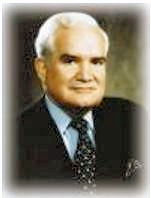 Nominations are open for the 2019
Nominations are open for the 2019 .png) a reason for each suggestion or recommendation. Comments may be anonymous.
a reason for each suggestion or recommendation. Comments may be anonymous. Sponsored by
Sponsored by 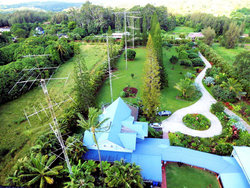
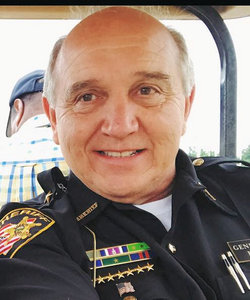
 FCC wrote, because it would restrict a given applicant's choice of vanity call signs to 10% or less of those otherwise assignable.
FCC wrote, because it would restrict a given applicant's choice of vanity call signs to 10% or less of those otherwise assignable.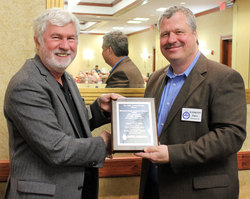
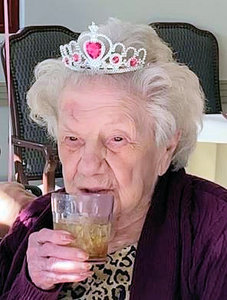 Hopkins
Hopkins 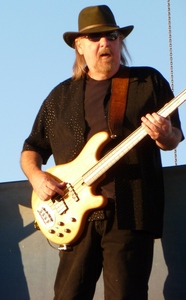 album. He's better known as a member of another Southern Rock band, 38 Special, with which he performed from 1977 until retiring in 2014.
album. He's better known as a member of another Southern Rock band, 38 Special, with which he performed from 1977 until retiring in 2014.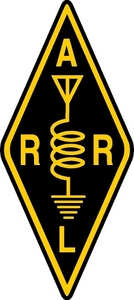 The ARRL Board of Directors' Executive Committee (EC) will meet on October 12 in Denver, Colorado. The meeting agenda includes legal, legislative, and organizational matters as well as reports from ARRL President Rick Roderick, K5UR; ARRL CEO Howard Michel, WB2ITX, and Washington Counsel David Siddall, K3ZJ. The EC will consider an ex parte filing on ARRL's petition for rule making (RM-11785) to the FCC to create a new, contiguous secondary Amateur Service band at 5 MHz, filed in January of 2017. In its petition, ARRL asked the Commission to keep four of the current five 60-meter channels -- one would be within the new band -- as well as the current operating rules, including the 100 W PEP effective radiated power (ERP) limit.
The ARRL Board of Directors' Executive Committee (EC) will meet on October 12 in Denver, Colorado. The meeting agenda includes legal, legislative, and organizational matters as well as reports from ARRL President Rick Roderick, K5UR; ARRL CEO Howard Michel, WB2ITX, and Washington Counsel David Siddall, K3ZJ. The EC will consider an ex parte filing on ARRL's petition for rule making (RM-11785) to the FCC to create a new, contiguous secondary Amateur Service band at 5 MHz, filed in January of 2017. In its petition, ARRL asked the Commission to keep four of the current five 60-meter channels -- one would be within the new band -- as well as the current operating rules, including the 100 W PEP effective radiated power (ERP) limit.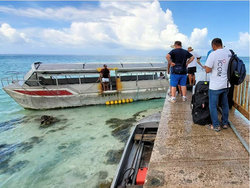 The Tokelau Islands ZK3A DXpedition has ceased operation early. Due to the illness of an Island resident, the
The Tokelau Islands ZK3A DXpedition has ceased operation early. Due to the illness of an Island resident, the 







